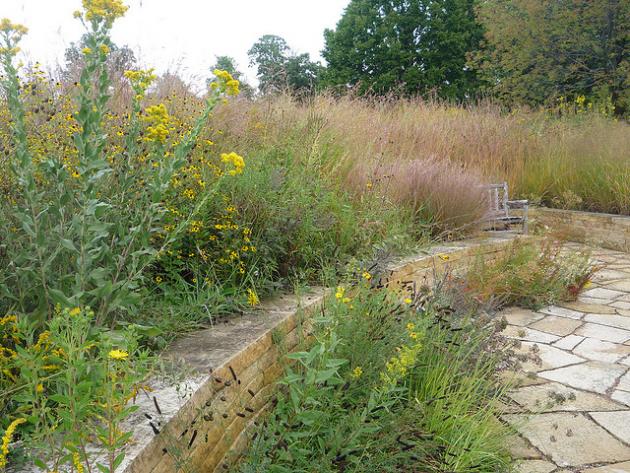Common misconceptions about using native plants in the landscape include:
Native plants have fewer insect and disease problems – Not always true
- In nature, a native plant problem might go unnoticed, but the same plant in a traditional landscape may give a poor appearance
Native plants are adapted to the area and have superior growth – Not always true
- Cold hardy native plants may have superior growth but may not be adapted to disturbed soil conditions often found in residential landscapes
Native plants are always more desirable than non-native plants – Not true
- For example, poison ivy and poison sumac are native but are far from desirable to have as landscape plants
Using native plants in a landscape should look like a natural woodland or prairie – Not true
- Native plants can be used in the same way as non-native ornamental plants in a landscape
- Native plants can be incorporated into existing garden styles and even into formal designs

Using native plants will create a messy yard – Not true
- A natural meadow or forest look may be desired by some homeowners but other landscape styles are possible
- Native plants can be functional by providing food, shelter, and reducing water requirements in most landscape designs
I can’t create a natural appearing landscape – Not always true
- Many designers specialize in native/natural landscape design.
- Observe and take notes or make sketches while hiking, camping, and in other natural settings for ideas
- Notice forms and plant groupings in general

Once I plant a native, I won’t have to water it – Not true
- Native plants require regular watering to become established
- Not all natives are drought tolerant
- Native riparian plants, or plants that naturally occur along water-ways have higher water requirements
It is important to remember that clear goals and a well researched plant list will produce a landscape that can reduce water use, lower maintenance, and be aesthetically pleasing.
Additional Resources:
Midwest
Illinois – What Exactly are Native Plants?
